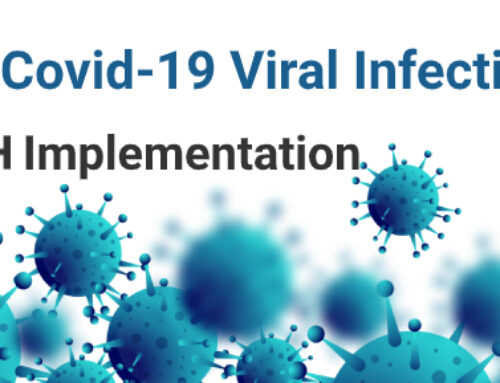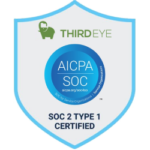Hadoop Framework: The Backbone of Big Data’s Legacy and Its Future
Introduction: When Data Outgrew the Database
A decade ago, one of my first data engineering gigs involved loading tens of gigabytes of CSV logs into MySQL and struggling with complexity and performance. Every time the logs grew by 2×, the database choke point became a nightmare. Queries missed deadlines, the team scrambled to shard, and we spent weeks rewriting ETL pipelines.
Then I first encountered Hadoop. A distributed, fault-tolerant, scalable system built on commodity hardware. Suddenly, what had been impossible at scale started to feel routine: processing terabytes, then petabytes of raw data, inferring insights, building data lakes, making analytics possible on massive scales.
Though newer tools now dominate many “modern data stacks,” Hadoop’s legacy is profound — and many organizations still depend on it for large-scale batch processing, archival storage, and cost-effective infrastructure. In this article, we’ll explore what Hadoop is, how it became foundational, where it still shines — and where it’s being replaced. You’ll walk away with both technical context and practical insight.

What Is Hadoop?
At its core, Apache Hadoop is an open-source software framework that enables the distributed storage and processing of massive datasets across large clusters of commodity hardware — using simple programming models.
Rather than relying on one powerful server, Hadoop distributes data across many machines, running computations near where the data resides. This avoids bottlenecks of data movement and gracefully handles hardware failures.
Hadoop was born from efforts to scale web indexing and search tools (notably via Nutch), eventually splitting out into what we now recognize as Hadoop.
Core Modules in Hadoop
Hadoop isn’t just one piece — it comprises several modules working together. The four key ones are:
- Hadoop Distributed File System (HDFS)
A fault-tolerant distributed file system that splits large files into blocks, replicates them across nodes, and provides high throughput on large datasets. - YARN (Yet Another Resource Negotiator)
The resource management and job scheduling layer. YARN manages cluster resources and schedules tasks, decoupling compute from storage. - MapReduce
The original engine for distributed batch computation in Hadoop. MapReduce splits jobs into map and reduce phases, runs them in parallel across nodes. - Hadoop Common (Utilities / Libraries)
The shared Java libraries and utilities that support other Hadoop modules.
These build the core Hadoop storage + compute + resource orchestration stack.
Ecosystem & Related Tools
Over time, a rich ecosystem grew around Hadoop — extending functionality, adding SQL layers, scheduling tools, streaming, and more. Examples:
- Hive — SQL-like query interface (HiveQL) over Hadoop (often converting queries to MapReduce, Tez, or Spark)
- Oozie — Workflow scheduler for Hadoop jobs (MapReduce, Pig, etc.)
- Avro — Data serialization format used in Hadoop / Kafka ecosystems
- Parquet / ORC — Columnar file formats commonly used on Hadoop storage for analytics
- Other tools/integrations: HBase, Pig, Scoop, Flume, Spark (often used as a compute engine replacing vanilla MapReduce)
Thus, Hadoop is often considered the foundation / “data lake layer” with many tools built on or beside it.
Use Cases / Problem Statements Hadoop Can Solve
What kinds of problems make Hadoop a suitable choice? Let’s look at real-world scenarios.
Use Case 1: Batch Analytics on Massive Datasets
When you have petabytes of log data, clickstreams, sensor data, web crawls, etc., you need a system that can process them in batch, compute aggregates, build data models, ETL pipelines. Hadoop’s distributed compute + storage model excels here.
Use Case 2: Data Lake Storage
Many organizations use Hadoop (HDFS) as a cost-effective, scalable data storage layer — storing raw, structured, unstructured data, and enabling downstream processing, data science, or archival. Because it doesn’t require schema upfront, it supports variety of data types.
Use Case 3: ETL Pipelines & Data Warehousing Preprocessing
Hadoop often acts as a staging / transformation layer for data before it’s loaded into analytical warehouses. You can do data cleaning, transformation, enrichment at scale.
Use Case 4: Log Processing, Indexing, Search Backends
Originally inspired by web search, Hadoop is often used for large-scale indexing, inverted index creation, log aggregation, and text analytics.
Use Case 5: Archival & Compliance Storage
Long-term storage of data that may not be actively used but must be preserved (audits, compliance, backups). Hadoop offers a cheaper alternative to pure high-speed systems.
Use Case 6: Machine Learning / Model Training in Bulk
Hadoop can feed large volumes of data into machine learning training pipelines (though many have moved to Spark, Flink, or more specialized ML systems).
Problem Contexts That Wink Toward Hadoop
- Datasets too large to fit on a single machine
- Need for processing over multiple nodes in parallel
- Failure-prone environments (need fault tolerance)
- Preference for open-source, on-prem or hybrid infrastructure
- Avoiding vendor lock-in (by using commodity hardware)
Pros (Strengths) of Hadoop
Why did Hadoop become so influential? And why do many still use it?
Horizontal Scalability on Commodity Hardware
You can add cheap commodity nodes to scale your storage and compute as needed.
Fault Tolerance & Resilience
Because data is replicated across nodes and tasks are retried, Hadoop tolerates failure gracefully. HDFS replicates blocks across nodes.
Cost Efficiency
Since it uses commodity hardware and open-source software, it offers lower cost than proprietary high-end systems for large-scale data storage.
Flexibility (Schema-on-Read)
You don’t need upfront schema definitions. You can store varied data types and analyze them later.
Ecosystem & Community Maturity
With years of development, many tools, connectors, extensions, and expert community knowledge exist. It’s battle-tested.
Integration with Big Data Pipelines & Tools
Because Hadoop is foundational, many big data architectures assume its existence — making integration easier (with Spark, Hive, Kafka, etc.).
Works On-Prem & Hybrid
You can run Hadoop clusters on your own hardware, on rented servers, or integrate with cloud infrastructure — giving flexibility for enterprises reluctant to move fully to cloud.
Cons / Limitations & Challenges
While powerful, Hadoop has significant trade-offs. These are vital to understand when comparing it to newer alternatives.
Complexity and Operational Overhead
Running and maintaining Hadoop is non-trivial: cluster tuning, replication, data balancing, configuration, upgrades, monitoring. The ecosystem has many moving parts.
Latency & Performance Issues
Vanilla MapReduce is not ideal for low-latency analytics or interactive queries — it’s batch-oriented. Interactive or ad-hoc queries tend to be slow. Many have migrated toward engines like Spark, Impala, or Presto.
Evolving Alternatives with Better UX / Efficiency
Modern tools (cloud warehouses, Spark, lakehouses) offer simpler architectures, better performance, less maintenance. Some argue Hadoop is becoming legacy.
SQL / Query Usability Limitations
The native MapReduce paradigm is programmatic. For SQL-style analytics, you need layers like Hive, Impala, or Spark SQL — adding complexity.
Inefficiencies in Small Jobs or Real-Time Use
Hadoop is overkill for small datasets or real-time stream processing. Its design is for large-scale, batch-oriented computing.
Cost of Data Movement & I/O
Heavy disk I/O, network data transfer, and data shuffling in MapReduce can be expensive and bottlenecked. Optimization and tuning are often required.
Migration Risk & Legacy Burden
As newer systems evolve, migrating from Hadoop to more modern systems is costly in terms of rework, rewrite of pipelines, data migration, retraining teams.
Alternatives to Hadoop
Given its limitations, many organizations are exploring or already using alternatives. Here are key ones and when they make sense:
| Alternative / Approach | Description & Strengths | Use Cases / When to Favor Over Hadoop |
| Apache Spark | A fast, in-memory distributed engine supporting batch, streaming, ML, graph processing. Often used instead of MapReduce. | Interactive analytics, iterative algorithms, machine learning workloads. |
| Data Warehouse / Cloud DBs (BigQuery, Snowflake, Redshift) | Fully managed, serverless, SQL-first analytics engines. | Analytics, dashboards, ad-hoc queries, ELT-style workflows. |
| Lakehouse / Open Table Formats (Delta Lake, Apache Iceberg, Hudi + engines like Trino, Presto) | Unified storage + query (batch & streaming) architecture over object storage. | Modern data architectures requiring flexibility, streaming + batch, and cloud-native design. |
| SQL-on-anything Engines (Presto / Trino) | Query engine that federates across data sources (including Hadoop, S3, relational) with ANSI SQL. | Ad-hoc exploration, federated queries across multiple data stores. |
| Streaming / Real-time Systems (Apache Flink, Kafka Streams, Samza) | For low-latency, stateful stream processing pipelines. | Real-time analytics, event-driven architectures. |
| Cloud-native Data Tools / Services | Managed services like Dataproc, EMR, Google BigLake, managed Spark, etc. | When you want to reduce operational burden while still scaling analytics. |
Often the modern design is hybrid — using Hadoop (or HDFS) for archival or historical data, while new processing shifts to Spark, lakehouses, or warehouses.
Upcoming Updates & Industry Insights
Understanding the direction of Hadoop — where it is going, being replaced, or continuing to evolve — is critical for long-term planning.
Evolving Role: Legacy, Foundation, or Niche?
Many experts note Hadoop is no longer in the spotlight for greenfield projects. It remains heavily used in legacy systems and large on-prem clusters.
Hadoop’s core storage layer (HDFS) still holds value, especially for cost-effective large-scale storage. Some designs position Hadoop more as a storage backbone rather than compute engine.
Integration with Cloud & Containerization
To maintain relevance, Hadoop and its ecosystem are integrating better with containers (Kubernetes), orchestration, and hybrid cloud setups. Many enterprises deploy Hadoop clusters in cloud-managed services (Dataproc, EMR) rather than purely on-prem.
Coexistence with Modern Engines
One likely future is coexistence: Hadoop for archival or large-scale batch, with higher-level engines (Spark, lakehouses) for compute and analytics layers. Many teams use Hadoop + Spark + Presto + storage layers together.
Tooling, Performance Optimizations & Research
Recent research continues around improving Hadoop performance (caching strategies, failure-aware schedulers, parameter tuning). For example, “Overview of Caching Mechanisms to Improve Hadoop Performance” shows hybrid caching methods that reduce I/O and job execution times ~31% on average.
Adaptive scheduling improvements like ATLAS for failure prediction are also studied in the Hadoop context.
The Post-Hadoop Narrative
Many articles argue we have entered a “post-Hadoop era” — not because Hadoop is dead, but because the emphasis has shifted. Newer architectures, cloud-first mindsets, and real-time processing needs drive alternatives. Yet Hadoop’s conceptual legacy (distributed storage + compute) persists under new names.
Project References & Real-World Examples
Frequently Asked Questions
Q1: Is Hadoop still relevant in 2025?
Yes. While Hadoop may no longer be the cutting-edge technology, it remains relevant — especially in legacy systems, on-prem environments, and for large batch or archival workloads.
Q2: Why has Hadoop declined in popularity?
Mostly due to complexity, rise of more efficient alternatives (Spark, cloud warehouses, lakehouses), and shifting patterns toward real-time processing.
Q3: Can Hadoop support streaming / real-time data?
Not well natively. For real-time, systems like Flink, Kafka Streams, or Spark Streaming are preferred. Some tools can adapt Hadoop logic for streaming, but it’s not Hadoop’s strength.
Q4: What’s the difference between Hadoop and Spark?
Hadoop is a storage+compute framework; Spark is a high-performance compute engine optimized for in-memory processing, more iterative and modern than traditional MapReduce.
Q5: Should I invest in Hadoop for new projects?
Unless your context demands on-prem, large archival storage or you’re migrating existing infrastructure, it’s worth evaluating newer architectures. But knowing Hadoop fundamentals is still valuable.
Q6: How does licensing/ownership work?
Hadoop is open-source under the Apache license. Many vendors offer commercial distributions (Cloudera, Hortonworks, CDH) but the core code is free.
Third Eye Data’s Take
Hadoop pioneered a paradigm shift: distributed storage and compute over commodity hardware. Its concepts — fault tolerance, data locality, horizontal scaling — laid groundwork for countless data systems that followed.
While Hadoop’s MapReduce-centric compute is no longer the star of the show, parts of its architecture (especially HDFS, its ecosystem, and data processing philosophy) still endure. In many modern systems, you’ll find Hadoop components working behind the scenes or influencing design decisions.
When architecting new data pipelines, think in terms of composable ecosystems: use Hadoop where it fits (batch, archival), but combine it with Spark, lakehouses, SQL-on-anything engines, streaming systems, or cloud-native services. In that hybrid design, Hadoop still has a role — but it’s one part of a more flexible, performant, and maintainable data landscape.
Call to Action
- If you’re unfamiliar with Hadoop, start by deploying a small single-node test cluster and writing simple MapReduce jobs. Get hands-on.
- Explore hybrid setups: use Hadoop for archival storage and run Spark or Presto over it.
- If you’re in a modern data stack, ask whether Hadoop is a foundational component or legacy burden — and plan for incremental migration if needed.









